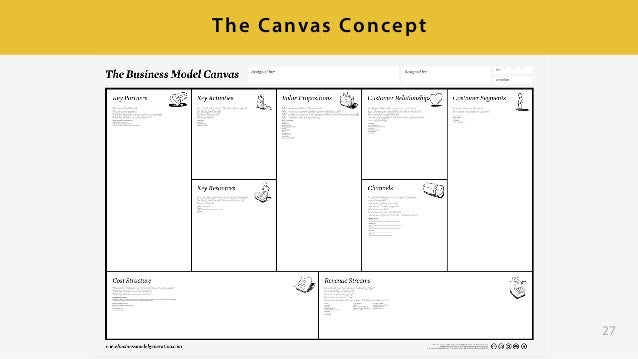

In this block, we clarify all available and possible data sources to be used for the ML task. Data Sourcesĭata is essential for training ML models. For example, instead of creating a universal chat-bot, build a bot that helps with scheduling conference-calls. Narrowing the domain of the problem could be useful for the next question regarding the required data. **For (target customer) who (need or opportunity), our (product/service name) is (product category) that (benefit).** To create an effective Value Proposition statement, we could use the Geoffrey Moore’s value positioning statement template: Who is the end-user? Can we specify the persona?.What is the problem? What objective are we serving? What are we trying to do for the end-user?.Here we should answer three important questions: This is the crucial blocks in the whole canvas.

Each of those blocks is focused on one aspect of the future ML application: Value Proposition
#Ai project canvas Offline#
In total, the Machine Learning Canvas is structured as ten compound blocks, such as Value Proposition, Data Sources, Prediction Task, Features (Engineering), Offline Evaluation, Decisions, Making Predictions, Collecting Data, Building Models, and Live Evaluation and Monitoring. The following machine learning canvas is an example provided by Louis Dorard: Finally, the Evaluation category contains methods and metrics for the ML model and the system evaluation. The Prediction part describes how the prediction is performed. The Learning category is responsible to specify how the ML model will be learned. The remaining canvas is divided into three broad categories: Learning, Prediction, and Evaluation. Typically, we answer the following questions: What problems are we trying to solve? Why is it important? Who is the end-user of our system? What value does the ML project deliver to the end-user? How will they use your outputs/predictions? The central part of the canvas is the Value Proposition building block, which describes products or services that create some value for customers. Initially, we identify the objective by answering a question what do we want to achieve for the end-users of the predictive system? Next, we connect the business goal to the ML task. This canvas structures the ML project and helps to specify the core requirements to realise the project. To achieve those goals there is another tool, the Machine Learning Canvas, as suggested by Louis Dorard. While the above AI canvas represents a high-level structure of the ML/AI implementation, at some point we would like to specify both the vision for the ML system and the specifics of the system. The example of such canvas and the description of each component is provided in the Figure below: The Simple Economics of Artificial Intelligence.” 2018, and “is an aid for contemplating, building, and assessing AI tools”. They also help to articulate exactly what is needed to predict and how we react on errors made by the prediction algorithm. The AI Canvas or its alternative, the Machine Learning Canvas, assist and help to structure the breakdown process.

The most useful question to continue working on the AI/ML solution is “how costly are wrong predictions?” Answering that question will define the feasibility of the ML project. Possible errors and minimum success for launching need to be specified. These requirements are translated into the model objectives and the model outputs. The initial step includes a thorough study of business problems and requirements.
#Ai project canvas software#
The most important phase in any software project is to understand the business problem and create requirements. “What is the business problem that we are trying to solve here?”


 0 kommentar(er)
0 kommentar(er)
